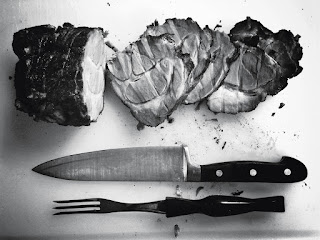3 Things You Need to Know about Protein
By: Kia Khadem
Read Time: 4 Minutes
TL;DR- The RDA values are based on minimums, not for building muscle. There are serious benefits to higher protein intakes, especially as you age.
Fire up the barbecue, buy some meat and call your friends over. The topic of protein intake has been confusing people for too long and this is the end of it.
People all over the world just want to know: “What do I need to eat to live a long, high-quality life, and look good doing it?”
A Google search for “how much protein” brings up over 71 million results. Many with differing opinions. Some professionals try to make the case that we are consuming way too much protein. Some say high protein diets put us at risk of osteoporosis and loss of kidney function.
While all this information is well-intentioned, it is not well-informed. Research shows many health benefits with protein intakes higher than the current recommended daily allowance (RDA). So it’s time to set aside preconceived beliefs and set the facts straight.
- Recommended Daily Allowance vs. Individual Needs of Protein
A reason for the mass confusion is not understanding the dietary guidelines and how they apply to individual needs. The RDA is set by The Food and Nutrition Board of the Institutes of Medicine to help guide dietary choices. You’ve probably seen the RDA shown as a percentage on food labels.
The RDA is the minimum level of intake required for health needed to avoid a deficiency. It doesn’t account for your athletic or aesthetic goals. The current RDA for protein is 0.8 grams per kilogram of bodyweight .
- Benefits of Higher Protein Intakes
In the last four years, six meta-analyses looked at high-protein diets and body composition. These studies showed greater weight loss, fat loss and maintenance of lean body mass (Phillips et al., 2016).
Combined with resistance training, a diet higher in protein is more effective at increasing lean mass and fat loss.
Longland et al. (2016) showed this by comparing a diet containing 2.4 g protein/kg of body weight to a diet containing 1.2 g protein/kg of body weight.
Higher protein intake also increases caloric expenditure and satiety. Johnston et al. (2002) showed this when they tested two groups of females. One group consumed a high protein diet equal to 1 gram of protein per pound of body weight. Another group consumed the same number of calories but less protein as per the Food Guide Pyramid. The higher protein group increased energy expenditure up to 90 calories in a 24 hour period.
But many people worry that eating more protein will lead to potential side-effects. Such as decreased kidney function and osteoporosis. It turns out these concerns are not factual.
A high protein diet doesn’t impact kidney function in individuals with healthy kidneys. In fact, the Institute of Medicine concluded, “the protein content of the diet is not responsible for the progressive decline in kidney function with age” (Phillips et al., 2016).
Another assumption is that high protein diets promote osteoporosis. It’s assumed that a high protein diet creates a high acid load that causes a gradual loss of calcium from the bone. That’s not supported by research either.
A meta-analysis by Fenton et al. (2011) concluded this is not supported by evidence and promotion of an alkaline diet to the public to prevent calcium loss is not justified. Higher protein intakes improve bone health and correlate with lower hip fractures when adequate calcium levels are present (Fenton et al., 2011).
- Protein Needs Increase With Age
But let’s start to think beyond looking and feeling good right now. About how we want our lives to be 20, 30, even 30 years from now. The maintenance of a high-quality life as we age is our ability to stay independent. And that comes down to having enough strength to do basic daily tasks.
A major health challenge as we get older is the slow decline of muscle mass and strength. And low protein intake contributes to it (Phillips et al., 2006).
The strength and muscle mass you build right now goes into a savings account that you can draw from as you get older.
And things don’t get easier as we age. We need more exercise and more protein to get the same muscular adaptations as when we’re younger. Moore et al. (2015) showed older men are less sensitive to protein intake than younger men. They need a greater relative protein intake per meal to maximally stimulate protein synthesis in the muscle (31 grams vs. 19 grams).
Consuming a diet high in protein is one of the best ways to improve your body composition and stay strong as you age. If you’re healthy, a high protein diet will not have negative consequences.
But if you’re still worried, well, that means more protein for the rest of us.
References
Fenton, T.R., Tough, S.C., Lyon, A.W., Eliasziw, M., and Hanley, D.A.( 2011). Causal assessment of dietary acid load and bone disease: A systematic review & meta-analysis applying Hill’s epidemiologic criteria for causality. Nutrition Journal, 10: doi:10.1186/1475-2891-10-41.
Johnston, C. S., Day, C. S., & Swan, P. D. (2002). Postprandial thermogenesis is increased 100% on a high-protein, low-fat diet versus a high-carbohydrate, low-fat diet in healthy, young women. Journal of the American College of Nutrition (1), 55-61. doi:10.1080/07315724.2002.10719194.
Longland, T. M., Oikawa, S. Y., Mitchell, C. J., Devries, M. C., & Phillips, S. M. (2016). Higher compared with lower dietary protein during an energy deficit combined with intense exercise promotes greater lean mass gain and fat mass loss: A randomized trial. The American Journal of Clinical Nutrition, 103(3), 738-746. doi: 10.3945/ajcn.115.119339.
Phillips, S. M., Chevalier, S., & Leidy, H. J. (2016). Protein “requirements” beyond the RDA: Implications for optimizing health 1. Applied Physiology, Nutrition, and Metabolism, 41(999), 1-8. http://dx.doi.org/10.1139/apnm-2015-0550



No comments:
Post a Comment